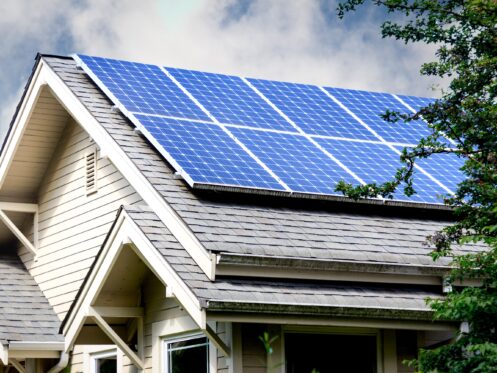Integrating solar power into your home can lower energy bills, reduce reliance on the grid and minimize your carbon footprint. To get the most from a solar setup, homeowners need an efficient electrical system.
Upgrading electrical panels, ensuring proper wiring, and using smart meters help maximize solar benefits. You also will want to think about your home’s electrical system capacity and your use cases. If you plan to stay grid-connected, factor in the rules for staying hooked up. The right combination of solar power generation and electrical system can deliver impressive dollar-for-dollar results over the life of your home.
Assessing Your Home’s Electrical System and Your Needs
A successful solar integration starts with understanding your home’s electrical system. The main electrical panel, circuit breakers and wiring must be in good condition and capable of handling solar input. Energy usage patterns matter, too. Daily consumption, peak demand and specific needs like EV charging or heavy-duty appliances affect solar integration.
For grid-tied setups, local utility rules affect connectivity. Storage needs, such as battery backup, will also shape your decisions. The right solar configuration depends on available roof space and sunlight exposure.
Electrical Panel
A modern and properly rated electrical panel is essential to smooth solar integration. Many homes have outdated panels that can’t handle the extra load from solar energy. Upgrading your electrical system with a new panel ensures safety, compatibility and efficiency.
Single-phase panels are the most common in residential homes and work well for standard solar setups. Three-phase panels are used in larger homes or properties with high energy demands. Also, modular panels offer flexibility. A modular panel includes expansion bays for additional circuit breakers. Especially if you expect to expand your home or add an advanced system like an EV charger in the future, a modular solution is a future-proof choice.
Regardless of your choice of panel, we recommend that you install a new electrical panel with at least a 200-amp capacity. 200 amps is a good target for modern living. At the same time, a 200-amp setup gives you overhead to support the electrical backfeed from the solar system when it’s at peak power generation. This is because your home’s electrical system has to transport electricity for your needs and from the panels at the same time. Your home’s electrical panel has to be up to this task.
Wiring Upgrades
Proper wiring ensures efficient and safe solar energy transmission. The right wire type reduces power loss and prevents overheating. Copper is the best choice for solar integration because it has lower resistance and better conductivity than the alternative, aluminum. Insulated copper wire with the right thickness minimizes voltage drop and withstands weather exposure. Larger wire gauges handle higher currents safely, too. High-quality copper wiring with insulation is a key investment in the efficiency, effectiveness and lifespan of your solar integration.
Smart Meters
A smart meter helps track energy use and solar power production in real-time. Unlike traditional meters, a smart meter provides detailed insights, making it easier to manage energy consumption. This is particularly useful if you wish to sell excess power back to the grid. Proper installation requires placing the meter in an accessible location and ensuring compatibility with your utility company’s communication protocols.
Final Integration
To get the most out of your solar panels, the system configuration is crucial. Inverters convert the DC power from the panels to AC power for home use, while charge controllers manage battery charging, preventing overcharging. DC-DC converters ensure stable voltage levels. It is rare that the electrical system at a home that doesn’t currently have solar will include these components.
If you wish to have battery backup, that is an additional consideration. Make sure the proposed battery system is compatible with your home’s solar panels and electrical system. Also, be sure that it has the capacity to provide the desired run times.
With supporting systems and electrical upgrades in place, the final step of integration is wiring it all together. Our electricians will test the system’s performance. We will also verify that your solar panels, your home’s electrical system and the larger grid are all interoperating as expected.
Paragon Electric performs licensed electrical work for residential properties as well as commercial and industrial customers. This includes installations, repairs and maintenance. All our advice comes from two decades of experience, and customers regularly leave us glowing reviews.
If you’re planning a solar integration in Plantation, FL or one of the surrounding communities, contact Paragon Electric right away to get started.



